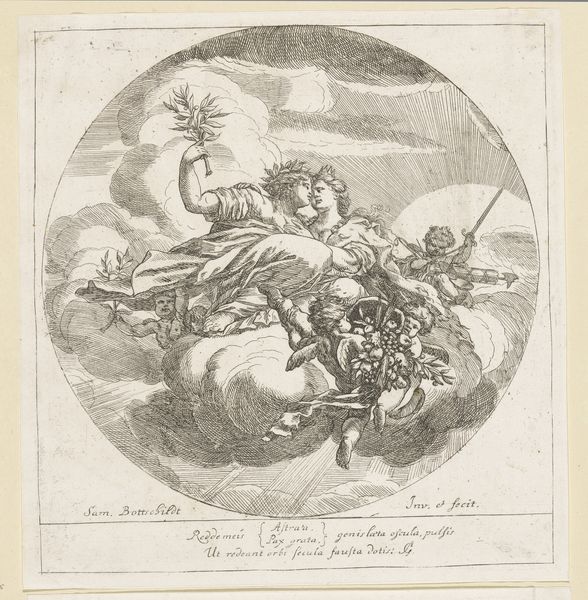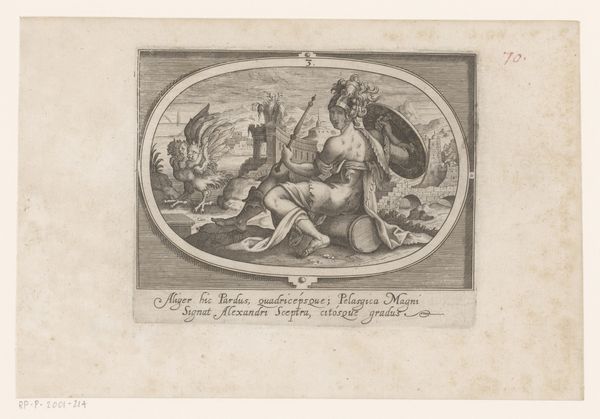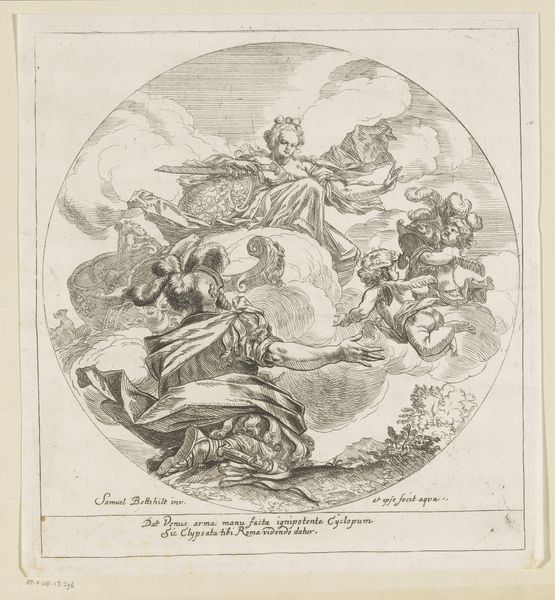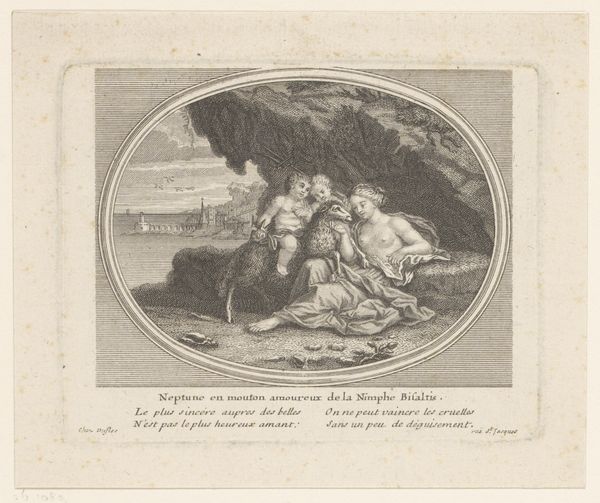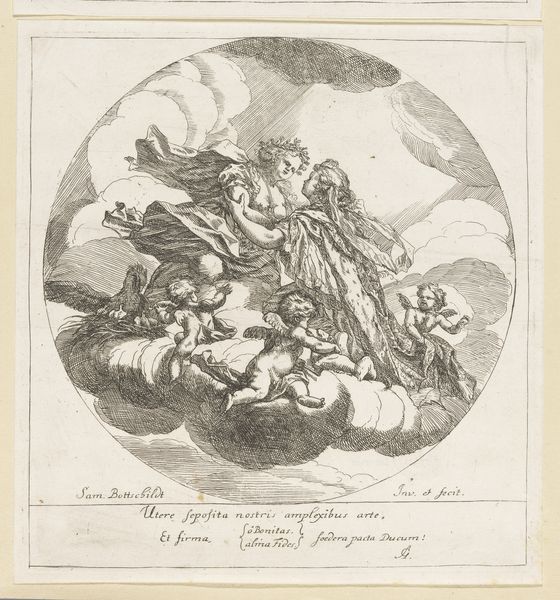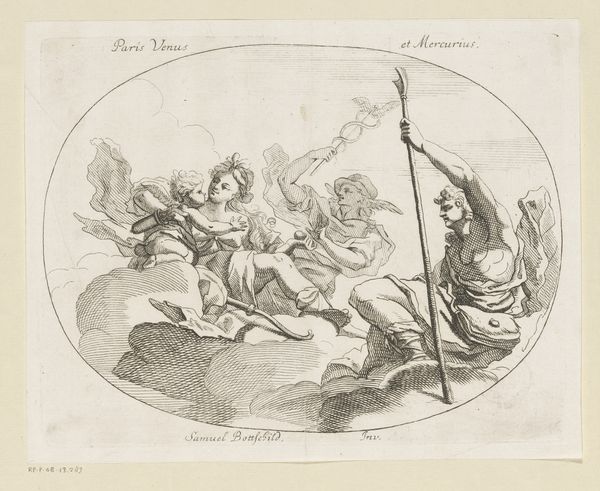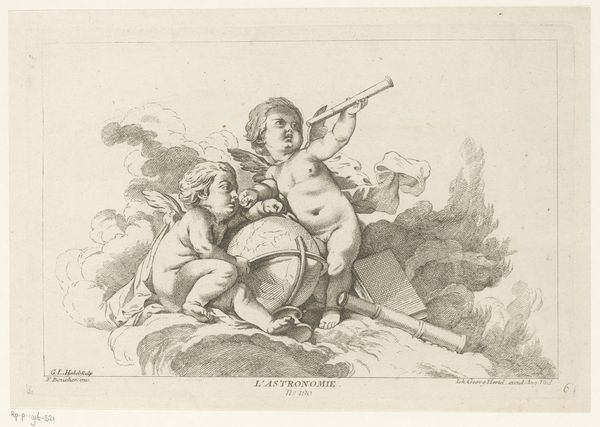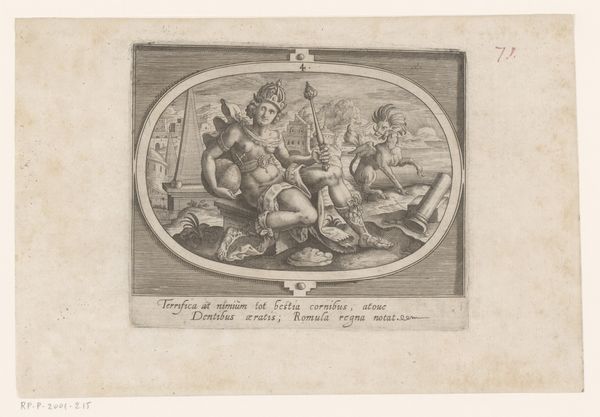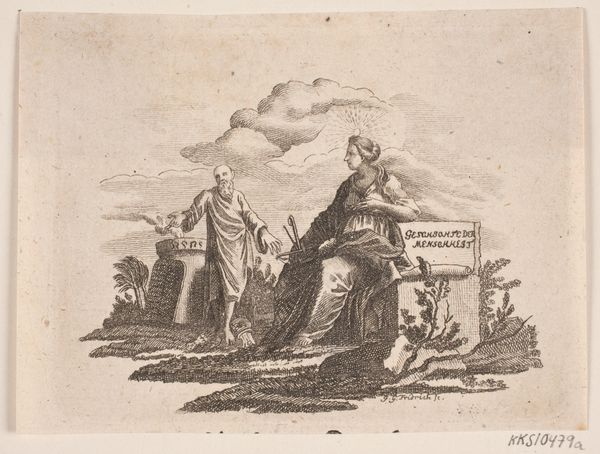
print, engraving
#
allegory
#
baroque
# print
#
figuration
#
engraving
Dimensions: height 188 mm, width 204 mm
Copyright: Rijks Museum: Open Domain
Samuel Bottschild created this engraving called “Aurora” in the 17th century. The circular composition immediately draws you into a world of classical allegory. Notice how Bottschild has structured the image. Aurora, the goddess of dawn, sits atop a cloud, regal and composed. The soft, flowing lines of her drapery contrast sharply with the angular, almost jagged, mountains in the background. An attendant cherub pours water from a jug, creating a symbolic cascade, while Aurora holds a torch, its flame reaching upwards. These elements frame the goddess, creating an intricate semiotic language. The engraving invites us to think about the intersection of classical mythology and the burgeoning scientific thought of the 17th century. How does Bottschild use the classical motif of Aurora to engage with contemporary ideas about nature? The very form of the engraving—its lines and shapes—becomes a site where tradition meets evolving worldviews.
Comments
No comments
Be the first to comment and join the conversation on the ultimate creative platform.
